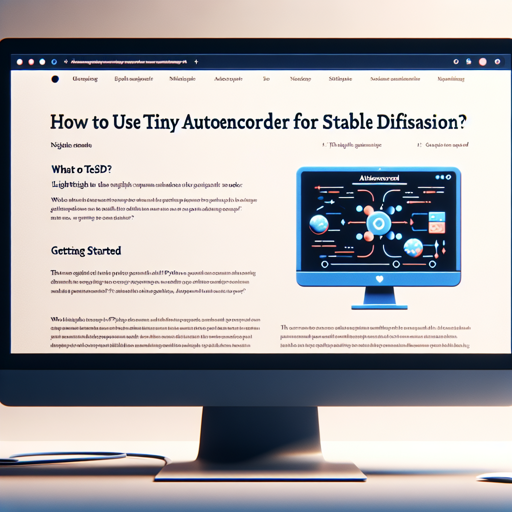Welcome to the world of image generation where creativity meets efficiency! In this article, we will guide you through the steps to effectively use the Tiny AutoEncoder for Stable Diffusion (TAESD). This tiny autoencoder utilizes the same latent API as the Stable Diffusion’s Variational Autoencoder (VAE), making it invaluable for real-time previewing of image generation.
What is TAESD?
TAESD is a lightweight model designed to enhance the experience of generating images using the Stable Diffusion framework. Think of it as a skilled artist, swiftly sketching your imagination before completing the full masterpiece.
Getting Started
To begin your adventure, you need to set up your environment with Python and the necessary libraries. Here’s how you can do it:
- Ensure you have Python installed on your system.
- Install the required libraries by running:
pip install torch diffusersUsing TAESD in Your Code
Below is the Python code snippet that demonstrates how to implement TAESD in your project. Think of this snippet as a recipe where each line contributes to the final dish!
import torch
from diffusers import DiffusionPipeline, AutoencoderTiny
pipe = DiffusionPipeline.from_pretrained(
"stabilityai/stable-diffusion-2-1-base", torch_dtype=torch.float16
)
pipe.vae = AutoencoderTiny.from_pretrained("madebyollin/taesd", torch_dtype=torch.float16)
pipe = pipe.to("cuda")
prompt = "slice of delicious New York-style berry cheesecake"
image = pipe(prompt, num_inference_steps=25).images[0]
image.save("cheesecake.png")Explanation of the Code
Imagine the code as a series of steps in a baking process:
- You import the necessary ingredients (libraries) like an artist gathers their paints.
- Then, you set up your DiffusionPipeline and assign your chosen model (like choosing your canvas and brushes).
- The pipe.vae line incorporates the Tiny AutoEncoder, linking it seamlessly with the Stable Diffusion framework, much like prepping your kitchen tools.
- You direct your computer to work with your graphics card (the cuda setting), ensuring everything runs smoothly — just as a chef would ensure their oven is preheated.
- In the last steps, you craft your image by describing what you want to create (“slice of delicious New York-style berry cheesecake”) and save it as a delightful culinary artwork!
Troubleshooting Tips
Not all recipes go as planned! Here are some common issues you might encounter:
- If your code throws an error related to CUDA, ensure your GPU drivers and CUDA toolkit are correctly installed. Running on CPU instead? Adjust the
pipe.to("cuda")line accordingly topipe.to("cpu"). - Encountering import errors? Verify that you installed all libraries correctly using the specified pip command. Missing libraries can be as annoying as forgetting an ingredient!
- If the generated image doesn’t resemble your prompt, experiment with different num_inference_steps to refine the output. Sometimes, it takes multiple tries to perfect a dish!
For more insights, updates, or to collaborate on AI development projects, stay connected with fxis.ai.
Conclusion
Congratulations! You’ve now mastered the use of the Tiny AutoEncoder for Stable Diffusion. At fxis.ai, we believe that such advancements are crucial for the future of AI, as they enable more comprehensive and effective solutions. Our team is continually exploring new methodologies to push the envelope in artificial intelligence, ensuring that our clients benefit from the latest technological innovations.
With this knowledge, you’re ready to embark on creative adventures that bring your visions to life through the magic of AI! Enjoy creating!

